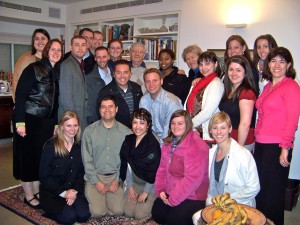 Last week, noted sportswriter Sally Jenkins used her Washington Post column to ask why the United States government was devoting so many resources to the prosecution of baseball star Barry Bonds. Why, she asks, with so many problems in the country, are we expending so much effort trying to convict the all-time home run leader of the crime of perjury, when his real offense, the use of illegal drugs, is so relatively minor. Better, she says, to let Major League Baseball deal with this problem, and let the federal government tackle people who are guilty of more serious offenses.
Last week, noted sportswriter Sally Jenkins used her Washington Post column to ask why the United States government was devoting so many resources to the prosecution of baseball star Barry Bonds. Why, she asks, with so many problems in the country, are we expending so much effort trying to convict the all-time home run leader of the crime of perjury, when his real offense, the use of illegal drugs, is so relatively minor. Better, she says, to let Major League Baseball deal with this problem, and let the federal government tackle people who are guilty of more serious offenses.
To my mind, Jenkins has it all wrong. It is especially important that Bonds be convicted. In the United States, baseball has always been more than just a game. From the 1870’s onward, major league baseball has been equally entertainment and morality play. Every season involves the enactment of a public ritual that emphasizes and validates our most important common values. In a society that celebrates individualism, but only within the constraints of moral norms, baseball celebrated individual accomplishment but always within the context of team play.
The ability of ordinary young men to rise from rural pastures or urban sandlots, through the minor leagues, to the major leagues reiterated the “rags to riches” vision of the United States as a society of unlimited opportunity for people with natural talent and self-discipline. Even the annual example of once great players having to step aside because of age or injury emphasized that in the larger society each generation had to give way to the next and that current ability, rather than reputation or social status, was what really mattered. In other words, major league baseball was a kind of perfect social Darwinist fable.
One of the central rules of American society has long been that while aggressiveness and cleverness are to be rewarded, cheating is not an acceptable path to excellence.
Rules of lesser importance, like the ones that govern play on the field, can be bent without undermining the basic message of baseball, but the fundamental rule that only honest effort should be rewarded is not to be violated. Sneaking a spitball past the umpire or only pretending to touch second base while turning a double play are acceptable actions, but bribing an umpire or an opponent or physically harming an opponent while off the field are not.
Obviously this was always been more myth than reality, and traditional American values have been under attack since the 1960’s. Nevertheless, the myth of American values remains an important myth and one that plays an important role in insuring social cohesion.
What Barry Bonds did by using prohibited performance enhancing substances and then lying under oath about his actions was to violate not just the integrity of baseball but of core American values as well. Moreover, violating them in the context of baseball made his actions even worse. That he, and his steroid-enhanced cohorts, robbed Henry Aaron and Roger Maris of the home run records, the most prized examples of worthy accomplishment, makes his offense especially reprehensible.
Because playing Major League Baseball has been the dream of tens of millions of American males for nearly a century and a half, we have a certain quiet sympathy for those who might violate the merit principle to obtain a goal made unattainable by nature’s denial of physical talents. The baseball-loving, but physically inept college chemistry instructor of the movie “It Happens Every Spring” comes to mind, as does the middle-aged insurance salesman who sells his soul to the Devil for a chance to play in “Damn Yankees.” Bonds, however, deserves no such sympathy since his God-given talents made him one of the greatest players of his generation, making his turn to steroids nothing more than the expression of deplorable greed.
To convict Barry Bonds of steroid-related perjury is to reaffirm the continued significance of values that have long been central to the American experience. Texas v. Johnson notwithstanding, no one has the right to desecrate a national symbol and certainly not for no reason other than personal aggrandizement.
 As followers of the blog know, one of the high points of our trip to Israel was dinner with Justice Aharon Barak and his wife Judge Elika Barak. We were also joined by their daughter, Tamar, who is a mediator. Interestingly from the dispute resolution perspective, Justice Barak was the judge who brought mediation to Israel through the Supreme Court, permitting cases to be referred to mediation. In this post, student Olga Kordonskaya reflects on the evening:
As followers of the blog know, one of the high points of our trip to Israel was dinner with Justice Aharon Barak and his wife Judge Elika Barak. We were also joined by their daughter, Tamar, who is a mediator. Interestingly from the dispute resolution perspective, Justice Barak was the judge who brought mediation to Israel through the Supreme Court, permitting cases to be referred to mediation. In this post, student Olga Kordonskaya reflects on the evening:
